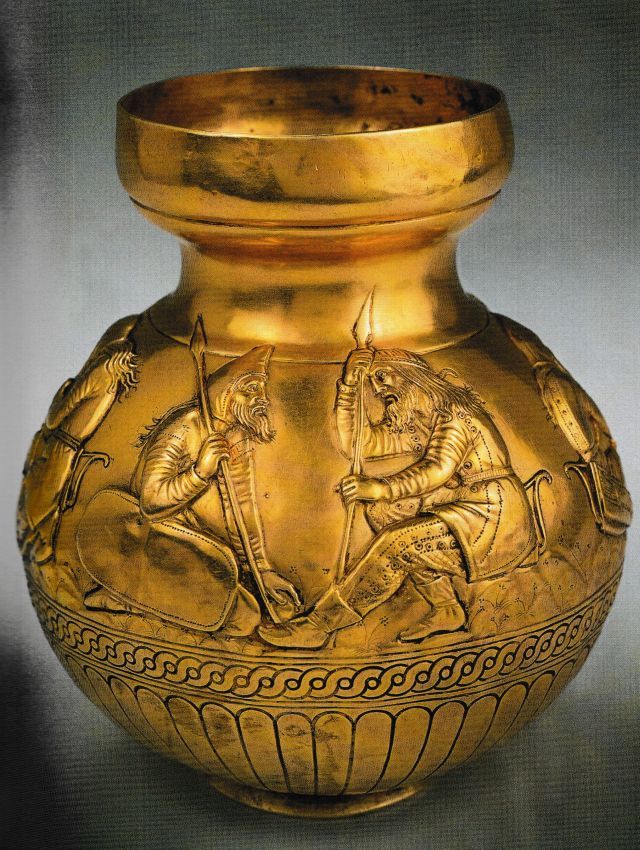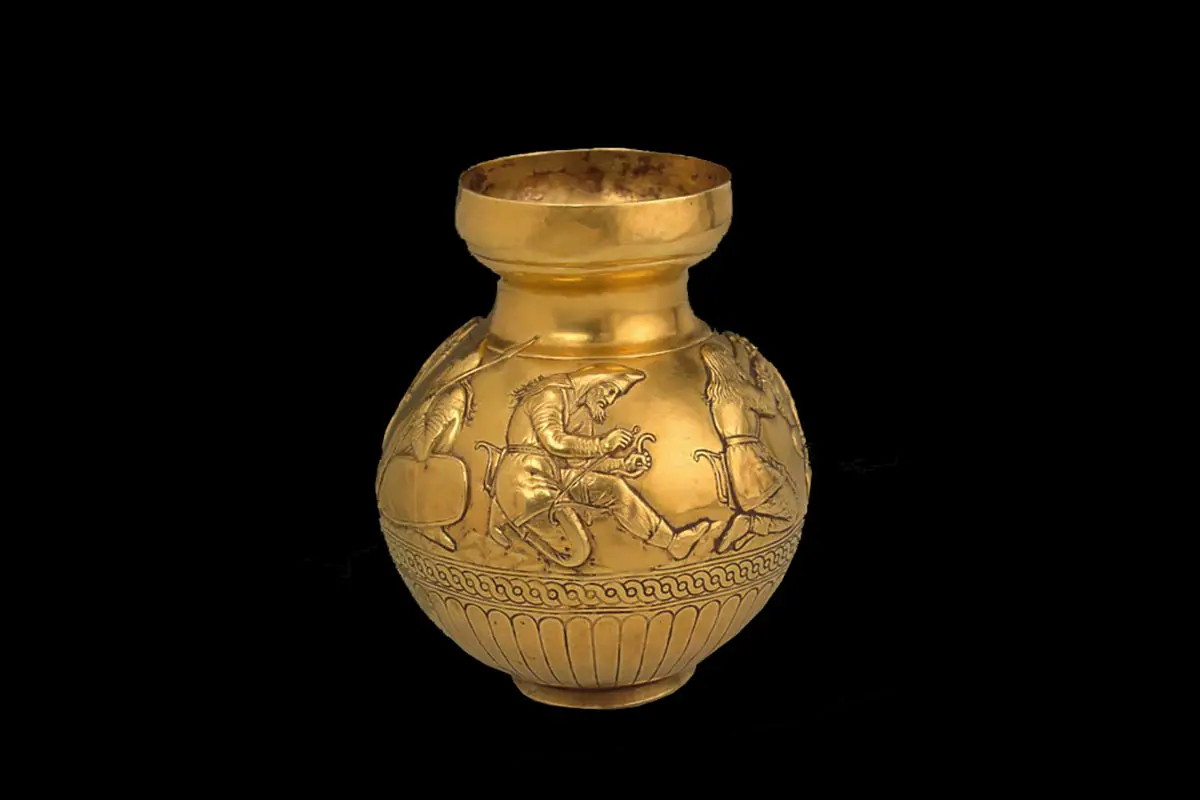The Scythian Cup, a remarkable gold artifact discovered in the Kul-Oba mound near Kerch, Crimea (Ukraine), offers a rare and invaluable insight into the world of the Scythians, fierce warriors of the Northern Black Sea region during the second half of the 4th century BC. Found in a woman’s grave, this exquisite piece of ancient jewelry is one of the most significant discoveries of Scythian culture and craftsmanship.
Artistic Mastery and Historical Insight
The cup features a detailed relief frieze depicting three paired scenes, including a striking image of a Scythian warrior drawing a bow. This vivid portrayal provides the first clear depiction of the Scythians, offering valuable information about their appearance, clothing, and armor. Crafted by a Greek goldsmith, the artist captures the distinctive features of Scythian warriors with remarkable ethnographic accuracy, from the design of their tunics to their weapons and armor.

What makes this artifact stand out is the level of realism in the artist’s depiction. The accuracy with which the goldsmith portrays the Scythians suggests that he had intimate knowledge of their lifestyle, either through direct interaction or close observation. This unique representation highlights not only the skill of the artist but also a cultural exchange between the Greeks and Scythians, providing a rare glimpse into the lives of these so-called “barbarians.”
Cultural Significance and Symbolism
The Scythian Cup is more than just a beautifully crafted object—it is a symbol of the wealth, power, and cultural sophistication of the Scythians. The use of gold, a precious and highly valued material, points to the high social status of the woman buried with the cup. The depiction of a warrior drawing a bow underscores the central role of archery in Scythian identity, emphasizing their martial prowess and their mastery of the steppes.

Additionally, the scenes on the cup may be connected to the historical and mythological accounts of the Scythians’ origins, as described by the ancient historian Herodotus. The warrior and bow motif may align with Herodotus’s tales, adding a layer of mythological significance to the artifact.
A Legacy of Warriors and Artists
The Scythian Cup stands as a testament to the remarkable artistic and cultural achievements of the Scythian people. It offers a direct link to their world, shedding light on their appearance, customs, and lifestyle. The detailed craftsmanship and the portrayal of Scythian warriors provide valuable insights into the daily life of these ancient steppe peoples.

Moreover, the cup exemplifies the artistic and cultural exchange between the Greek and Scythian civilizations. The Greek goldsmith’s work reflects the influence of both cultures, bridging the gap between the art of the ancient world and the powerful steppe warriors who shaped the region.
In conclusion, the Scythian Cup is not only a masterpiece of ancient craftsmanship but also an invaluable historical document. It offers a glimpse into the world of the Scythians, connecting us to a time when these mighty warriors dominated the Eurasian steppes and left an indelible mark on history.
